Chapter:
INT |
1 |
2 |
3 |
4 |
5
|
6
|
7
|
8 |
9 |
10 |
11 |
12 |
13
.
C
H
A
P
T
E
R
3
A R C H I T E C T U R E
.
STRUCTURE
Post-and-lintel, arch,
cantilever, bearing-wall, and skeleton frame.
POST-&-LINTEL
The Parthenon
Athens 432 BCE
England 1800-1400 BCE
COLUMNS
ARCH
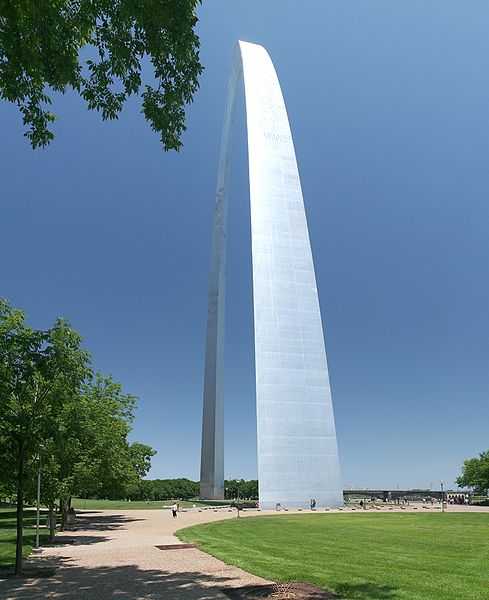
The Gateway Arch in St. Louis, Missouri is 630 feet wide and
630 feet tall.
Stone has very
good compressive strength, but it lacks tensile strength; it
cracks easily when spanning too great a distance. The arch
allows you to span a greater distance because it distributes
stress from the center keystone outward and downward.
Identify these
arches:
 |
 |
 |
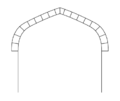 |
|
Round Arch |
Lancet
Pointed Arch |
Horseshoe |
Tudor Arch |
The round arch is less
efficient. It distributes stress more to the side, and
requires that the sides be supported by buttresses. The
pointed arch directs more stress downward.
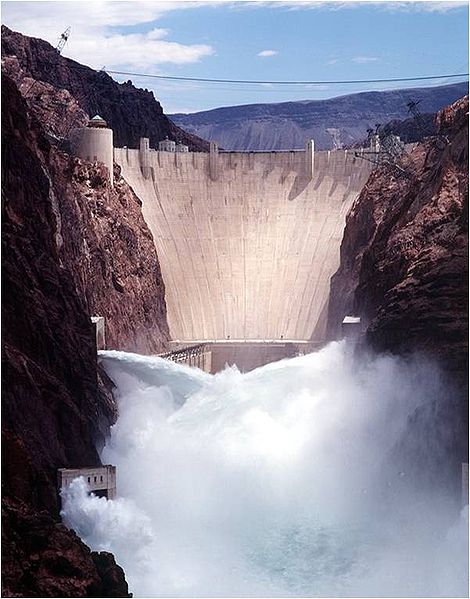
Hoover Dam is an example of
arches laying on their sides. These arches hold back the
tremendous pressures of 9.2 trillion gallons of water, but
it is the dept of the dam that is responsible for the
pressure - not the with.
The dam is located in Black Canyon of the Colorado River.
Over one hundred lives were lost in the building of this dam
- the largest cement structure of its time.
BUTTRESS
A buttress is
really half of a gothic arch that
supports a wall, and prevents it from buckling under the stress.
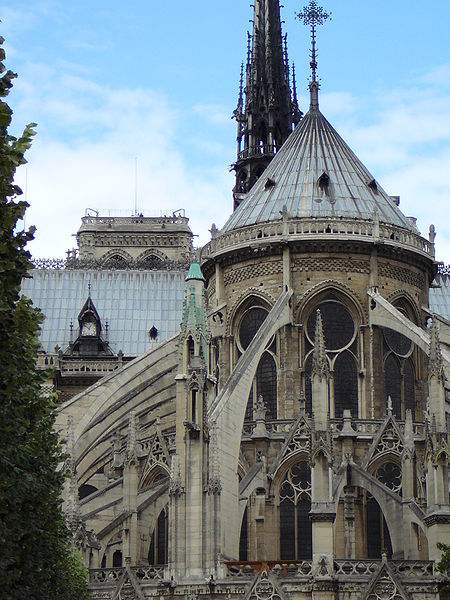
Notre Dame France
ARCADE:
A row of arches
- side by side.
TUNNEL VAULT
The tunnel vault, Also called
barrel vault, is a row of connected arches back to back.
This diagram of a pointed
barrel vault shows the direction of the lateral forces.
Breakthrough! Giant drill smashes open world's longest
tunnel under Swiss Alps
BRIDGES
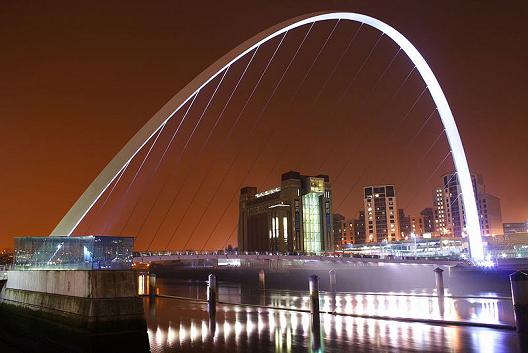
Gateshead Millennium Bridge England
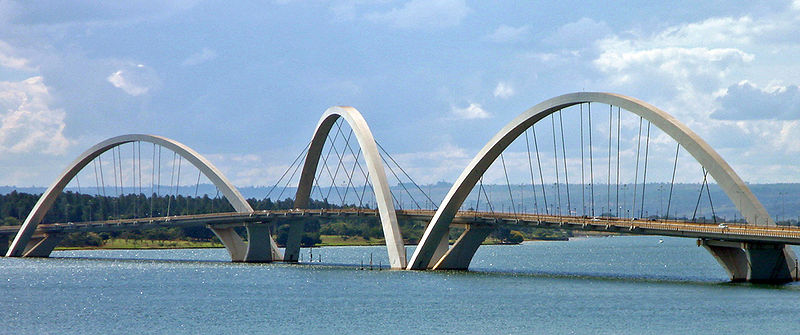
Juscelino Kubitschek bridge in Brasília, Brazil
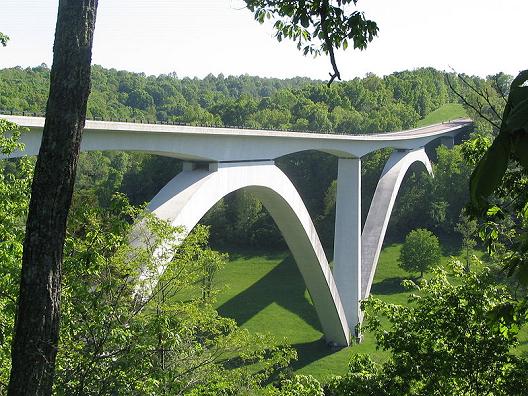
Natchez Trace Parkway Bridge
There are no spandrels
supporting this bridge.
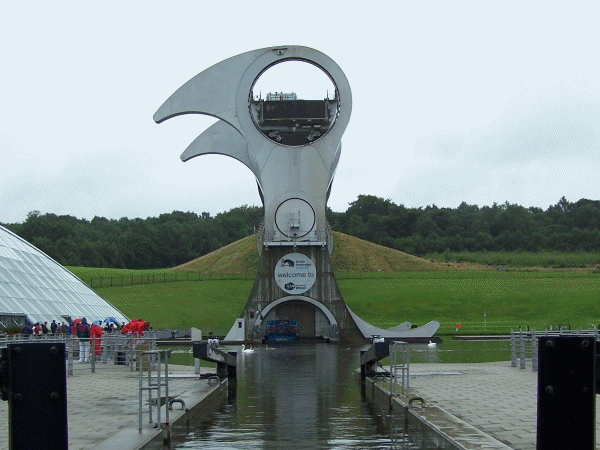
The Falkirk Wheel is a rotating boat lift located in
Scotland, UK, connecting the Forth and Clyde Canal with the
Union Canal
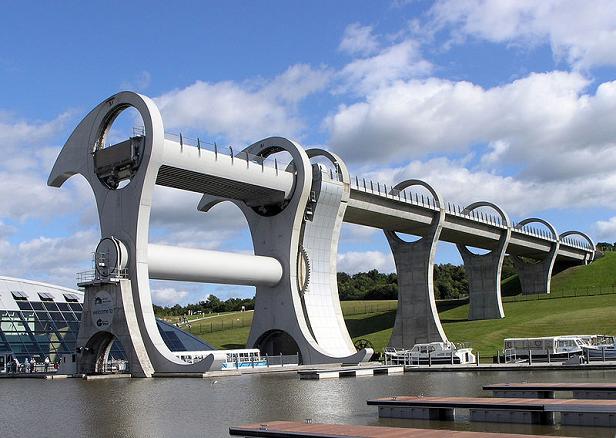
GROIN VAULT
A groin vault consists of two
tunnel vaults intersecting at right angles. See page 92.
Click Here
RIB VAULT
The intersection of a groin
vault.
DOME
 |
The dome of St.
Peter's Basilica in Rome was designed by
Michelangelo. It was not completed in 1590.
A dome consists of
arches joined at the top.
|
|
The Pantheon, Rome
Giovanni Paolo Pannini or Panini (1691–1765) |
|
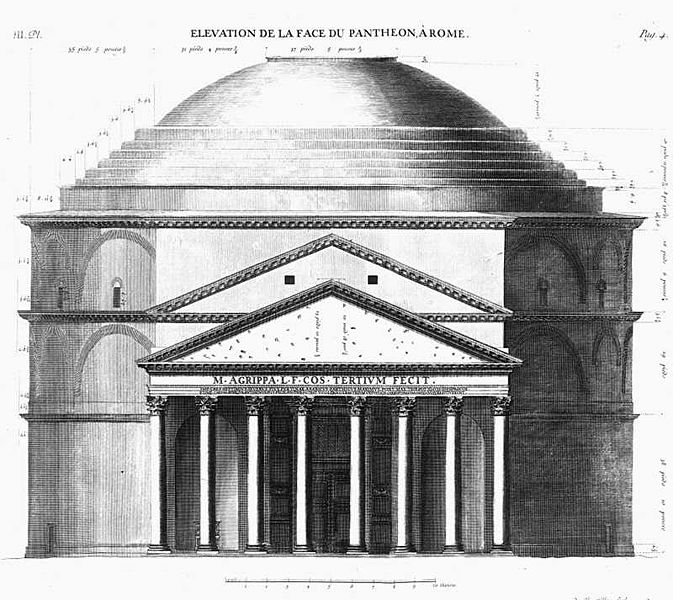

The coffers for the
Pantheon's concrete dome were poured
in molds to lighten the load. The oculus admits light in the
center. See page 94.
learn more |
PENDENTIVE
Hagia Sophia (Holy Wisdom) 537 A.D.
Istanbul, Turkey - Pendentive and Dome. The epitome of
Byzantine architecture, it was the largest
place of worship in
the world - for nearly a thousand years until the completion
of the
Seville Cathedral in 1520.
A pendentive allows a
circular dome to be placed over a square room - or an
elliptical dome over a rectangular room. Pendentives are
triangular segments of a sphere. They taper to points at the
bottom, and spread at the top. The pendentives receive
the weight of the dome, and concentrate it at the four
corners where it can be received by the piers beneath.
CANTILEVER
|

|
|
The cantilevered floor of
Frank Lloyd Wright's Fallingwater House jets out, and
overhangs. Cantilever construction allows for overhanging
structures without external bracing.
|
|
Ministry of Transportation in Tbilisi
|
|
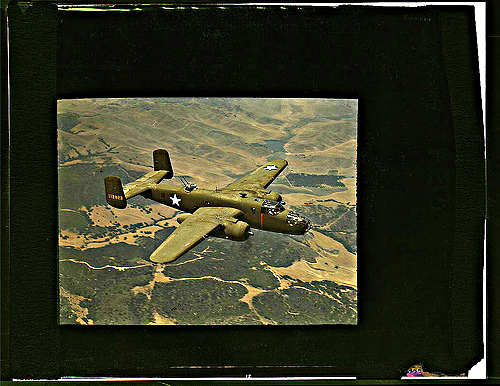
The wings of this B-25 Bomber
are cantilevered. |
|
 |
LOAD-BEARING WALL
Walls that support floors and roofs are called load-bearing
walls or bearing walls.
SKELETON FRAME
|
 |
The building is supported by
a framework while the external walls serve as a skin. When
the frame is constructed out of metal, we call it steel-cage construction.
When the skeleton is made of
wood, as in a house, we call it balloon construction. |
BUILDING MATERIALS
STONE
Masonry is stone, brick,
concrete block, glass block, or tiles joined with mortar. As
I said earlier, stone
has great compressive strength, but it lacks tensile
strength. It cracks easily when supported only by the sides
- as in post-and-lintel construction
TYPES OF STONE
There are three
types of rock: sedimentary, Metamorphic, and igneous.
Sedimentary
rock is formed by minerals and organic material (sediment)
in bodies of water. It carves easily, but doesn't last
long. Examples are: limestone, chalk, and sandstone.
Metamorphic
rock was previously rock (protolith). Then it's exposed to
heat and pressure. Examples are slate and marble. Marble
carves well, and lasts a long time.
Igneous rock is
formed by molten rock (magma). There are over 700 types.
Intrusive is below the Earth's surface. Extrusive is on the
surface. Granite is an example of this type of rock. It's
very
hard; it lasts a long time, but it's difficult to carve.
Antelope Canyon - Arizona
Sandstone is a sedimentary rock.
CONCRETE
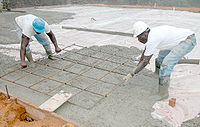
Concrete, like stone, has
strong compression strength, but it's weak in tensile
strength. The cement holding the aggregate in place easily
cracks.
Reinforced concrete has metal reinforcing rods or wires
(Rebar), glass fibers,
or plastic fibers pored into the concrete.
This gives it
the compressive strength of concrete - and the tensile
strength of the reinforced material.
WOOD
STEEL
Steel is an alloy of iron and usually carbon (2%), but other
alloys like tungsten, manganese, and chromium are
used. Carbon hardens the steel. Increasing the carbon
content will
result in steel that is harder and more brittle.
SCALE (p112)
Skyscrapers were made possible by steel, welding, and the
invention of the elevator.
World's Tallest Buildings
CONTEXT
FALLINGWATER
- Frank Lloyd Wright's
John Wesley Kamas
Trendir
SPACE
Leonardo Glass Cube by 3deluxe
SENSE
STIMULI
Luis Barragan
(1902-1988)
Shell House: Architect - Javier Senosiain
STYLE
Tadao Ando,
Japan
Gordon Bunshaft
(1909-1990)
Oscar Niemeyer,
Brazil
Renzo Piano
&
Richard Rogers
Jorn Utzon
DYNAMIC DESIGN
Frank Gehry
Antoni Gaudí (Antoni
Gaudí 1852–1926) was a Spanish architect.
OF INTEREST
|
Vietnam Veterans Memorial
Designed by Maya Lin.
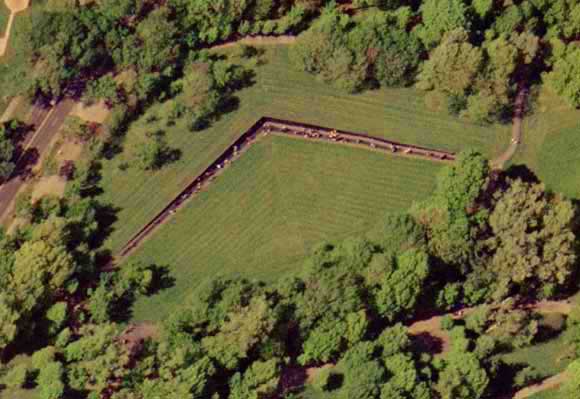
|
Pritzker Architecture Prize
http://www.pritzkerprize.com/laureates/year.html
CONTAINER HOLMES
WORLD
ARCHITECTURE:
THE ADOBE OF
Djenné
Building an Adobe Home
ARCHITECTURE OF ISLAM
EGYPTIAN ARCHITECTURE
GREEK ARCHITECTURE
ROMAN ARCHITECTURE
EARLY CHRISTIAN AND BYZANTINE
ARCHITECTURE
EARLY MEDIEVAL AND ROMANESQUE
ARCHITECTURE
GOTHIC ARCHITECTURE
TRADITIONAL ARCHITECTURE OF AFRICA
RENAISSANCE ARCHITECTURE
BAROQUE ARCHITECTURE
ROCOCO
NEOCLASSICISM
ARCHITECTURE OF THE NINETEENTH
CENTURY
MODERN ARCHITECTURE
